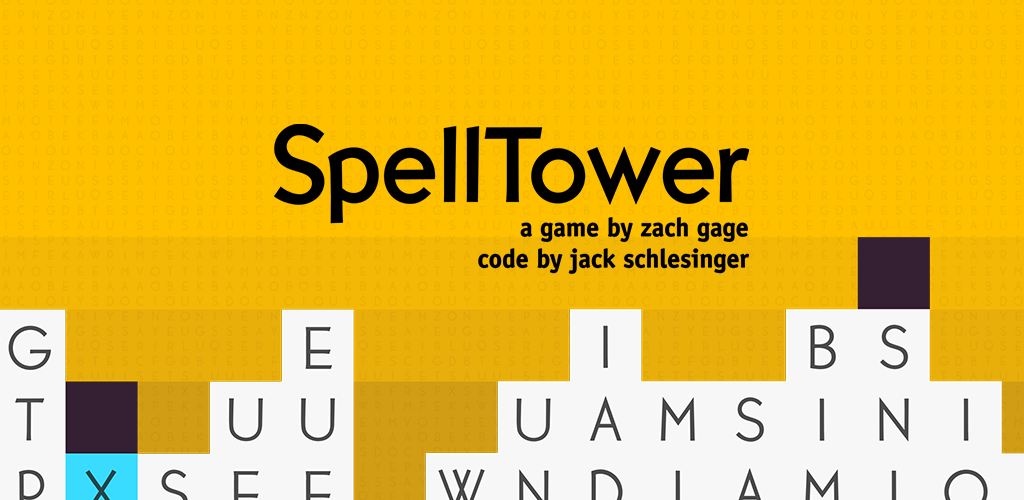

Gage was inspired by Puzzlejuice, that combined Tetris and Boggle, and with Puzzlejuice 's creator Asher Vollmer's permission, created a version that released prior to the game that inspired it. His next app, the word game SpellTower, was commercially successful and led to multiple venture capital offers that Gage declined in favor of staying independent. He created a visual music sequencer (SynthPond) and a horizontal Tetris-style game ( Unify). Outside of his art work, Gage began programming for Apple's App Store upon its 2008 opening for submissions. Security company Symantec classified the game as malware. The conceptual project intended to question human propensity to follow directions and the real-life consequences of in-game decisions, following from works including Eddo Stern's Tekken Torture Tournament. In its most infamous piece, Lose/Lose, the player shot on-screen aliens, each of which corresponded to a file on the player's hard drive. Back in New York, he completed a Master of Fine Arts degree at the Parsons School of Design, with a thesis show of multiple works on the relationship between data and the Internet. He was later hired to program an installation piece similar to his thesis for an exhibition at the Venice Biennale, which encouraged him to attempt new projects headlong. Gage returned to New York City after college and worked with Eyebeam. His new media thesis project was an interactive installation involving viewer tracking and video projection. He attended Skidmore College and upon finding its computer science program lackluster, graduated with a degree in art in 2007. He advanced to C++ and Java programming languages in high school, where he also developed an interest in photography. In his time with Cocoa, Gage collaborated with another teen developer, created a demo for the company that purchased Cocoa from Apple, and contributed to a book on the language. As a child, Gage created imaginary games with Kid Pix, the drawing software, on his family computer, a Macintosh LC, adventure games in Apple's hyperlink-based HyperCard software, and video games in Apple's Cocoa visual programming language for children.

He would retain this do it yourself mentality to learn new creative skills and escape later creative slumps. His mother allowed few game purchases in their house, and coming from a family of artists, encouraged Gage to make his own games. Zach Gage was raised in Westchester, New York. Gage also created multiple games based on playing card and board games, including Really Bad Chess (2016). With the 2008 opening of Apple's App Store, Gage created multiple apps and games, including the word games SpellTower (2011), TypeShift (2017), and collaborative work on Vlambeer's 2013 Ridiculous Fishing and Bennett Foddy's 2017 Getting Over It iOS port.
#Spelltower clone code
Gage learned to code throughout his youth and studied art at Skidmore College and Parsons School of Design, where he created installation and interactive works. I haven't personally written quaternion camera code (yet!) but I'm sure the internet contains many examples and longer explanations you can work from.Zach Gage is an indie video game developer based in New York City and best known for his iOS games, including SpellTower. It is very common for general purpose game engines to use quaternions for describing objects' rotations. Quaternions are used somewhat like rotation matrices, but have fewer components you'll multiply quaternions by quaternions to apply player input, and convert quaternions to matrices to render with. Instead, you should represent your camera/player orientation as a quaternion, a mathematical structure that is good for representing arbitrary rotations.

However, this approach (“Euler angles”) is both tricky to compute with and has numerical stability issues (“gimbal lock”).

The minimal solution to this is to add a roll component to your camera state. As a consequence, no matter how you implement the controls, you will find that in some orientations the camera rolls strangely, because the effect of trying to do the math with this information is that every frame the roll is picked/reconstructed based on the pitch and yaw. Two numbers can represent a look-direction vector but they cannot represent the third component of camera orientation, called roll (rotation about the “depth” axis of the screen).
#Spelltower clone free
The problem is that two numbers, pitch and yaw, provide insufficient degrees of freedom to represent consistent free rotation behavior in space without any “horizon”.


 0 kommentar(er)
0 kommentar(er)
